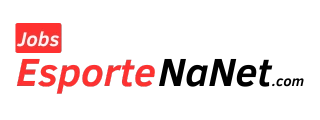Listen this article
Effective Job Hacks for Tailoring Your Portfolio can make all the difference in your career quest. You need to grab your audience’s attention and showcase your unique skills. This article will guide you in understanding who you are targeting, selecting the right projects, and displaying what truly matters. Get ready to boost your personal brand, craft an eye-catching narrative, and use visuals that pop. You’ll also learn the secrets to creating a memorable first impression and building connections that count. Let’s dive into the world of Effective Job Hacks for Tailoring Your Portfolio!
Key Strategies for Tailoring Your Portfolio
Understanding Your Audience
To truly connect with potential employers, you need to know who they are. Think about what they value. Are they looking for creativity, technical skills, or leadership? Research their company and the specific job role. What kind of projects do they showcase?
Here’s a quick way to break it down:
| Audience Type | What They Value |
|---|---|
| Creative Agencies | Innovation and artistic flair |
| Tech Companies | Problem-solving and coding skills |
| Nonprofits | Passion for the cause and teamwork |
By tailoring your portfolio to match what your audience cares about, you’ll make a stronger impression.
Selecting Relevant Projects
Choose projects that resonate with the job you want. If you’re aiming for a marketing role, include campaigns you’ve worked on. If it’s a design position, showcase your best designs.
Think of your portfolio as a storybook. Each project should tell a part of your story and highlight your abilities.
Here’s how to pick the right projects:
- Relevance: Does it relate to the job?
- Impact: Did it achieve great results?
- Skills: Does it show the skills needed for the job?
Showcasing Skills That Matter
Once you have the right projects, it’s time to highlight the skills that matter most. Use clear labels and descriptions to explain what you did.
- Be Clear: Use simple language. Avoid jargon.
- Be Specific: Mention your role in the project. What did you do?
- Be Visual: Use images or graphs to show results.
For example, if you increased website traffic by 50%, show a graph. This gives your audience a clear picture of your impact.
Remember, your portfolio is your personal brand. It should reflect who you are and what you can do.
Boosting Your Personal Brand
Crafting a Unique Narrative
Your personal story is your secret weapon. It sets you apart from the crowd. Think about what makes you, you. Share your experiences, struggles, and victories. This narrative can help others connect with you on a deeper level.
- Identify Key Moments: What events shaped your career? Write them down.
- Create a Timeline: This visual can help you see your journey clearly.
- Be Authentic: Speak from the heart. People appreciate honesty.
Using Visual Elements Effectively
Visuals can make your brand pop. They grab attention and make your story memorable. Here are some ways to use visuals to your advantage:
| Visual Element | Purpose |
|---|---|
| Photos | Show your personality |
| Infographics | Simplify complex information |
| Videos | Share your story dynamically |
Use these elements wisely. They should complement your narrative, not overshadow it.
Creating a Memorable First Impression
First impressions count. You want people to remember you for all the right reasons. Here’s how to make that happen:
- Dress Appropriately: Your outfit speaks volumes. Choose clothes that reflect your brand.
- Be Confident: Stand tall and smile. Confidence is magnetic.
- Engage with Others: Ask questions and listen. Show genuine interest in others.
The first impression is your chance to shine. Make it count!
Networking for Career Advancement
Building Meaningful Connections
When you think about career growth, building meaningful connections is key. It’s not just about who you know, but how well you know them. Attend events, join groups, and reach out to people in your field. Start conversations, ask questions, and listen actively. You never know where a simple chat can lead.
Here are some tips to help you build those connections:
- Be genuine: People appreciate honesty. Share your interests and goals.
- Offer help: If you can assist someone, do it! It builds trust.
- Stay in touch: Follow up after meeting someone. A simple message can keep the connection alive.
Leveraging Social Media Platforms
Social media is a powerful tool for networking. Platforms like LinkedIn, Twitter, and Facebook can help you connect with industry leaders and peers. Here’s how to make the most of them:
| Platform | Best Use |
|---|---|
| Connect with professionals, share updates, and join groups. | |
| Follow industry news and engage in conversations. | |
| Join groups related to your field and share insights. |
Be sure to update your profiles regularly. Share your achievements and insights. This shows you are active and engaged in your career.
Following Up for Future Opportunities
After making connections, don’t forget to follow up. This is where many people drop the ball. A simple message can open doors. Here’s how to do it right:
- Send a thank-you note: After meeting someone, thank them for their time. It shows you value the connection.
- Share relevant content: If you find an article that might interest them, send it along. It shows you care about their interests.
- Check in periodically: A quick message every few months can keep the relationship strong.
By following these steps, you can build a network that supports your career journey and leverage Effective Job Hacks for Tailoring Your Portfolio to enhance your professional presence.
